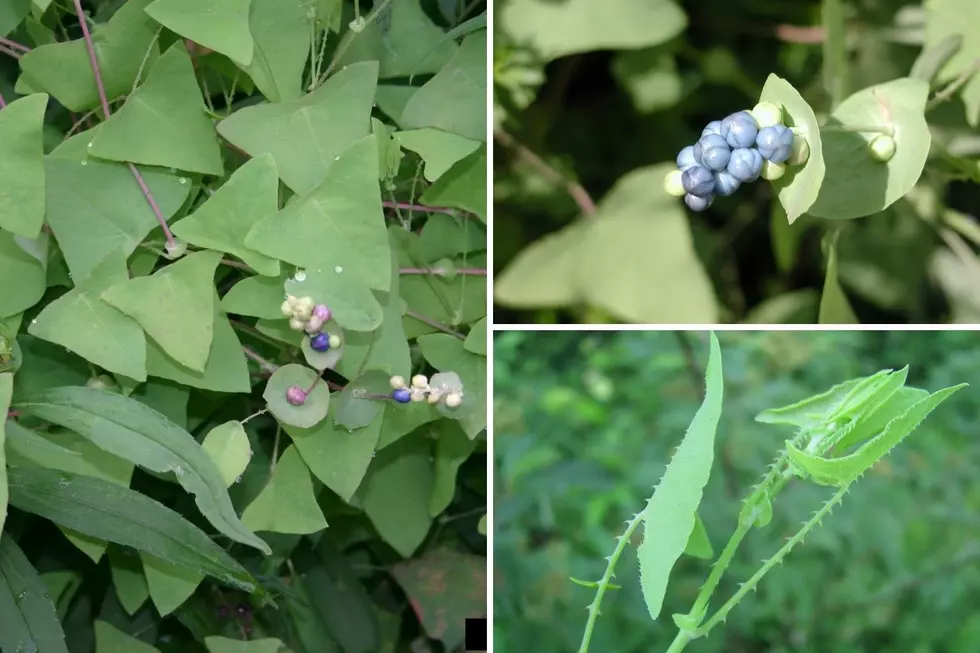
Invasive Weed Found At Albion College in Calhoun County
The Michigan Department of Natural Resources has confirmed the presence of a fast growing invasive weed in Michigan for the first time.
The Michigan departments of Natural Resources and Agriculture and Rural Development recently confirmed the presence of invasive mile-a-minute weed at Albion College’s Whitehouse Nature Center in Calhoun County. The scientific name for the plant species is Persicaria perfoliata.
This weed could do serious damage to agriculture related industries. Mile-a-minute weed can grow up to 25 feet in six to eight weeks. Dense, prickly thickets overtake native vegetation. Christmas tree farms, orchards, reforestation, and restoration areas are considered to be at risk because of the vine’s propensity to smother tree and plant seedlings. Mile-a-minute seeds are hardy, surviving in soil for up to six years even after the prickly vines are removed.
The invasive weed is native to India, Asia, and the Philippine Islands. Until Doug White, professor of ecology at Albion College, discovered it in early October, it had never been found in the state of Michigan. The Ecology professor located the plant in a forest opening on the property while surveying for house wrens.
I’m not normally out there in October, but we color-banded nestlings this year, and I was following the fledglings. I saw these purple and blue fruits on a plant, and I was curious. Years ago, I wrote my dissertation on bird-dispersed fruits, so naturally I wanted to find out what they were. - Doug White, professor of ecology at Albion College
White took photos, plucked a branch from the vine, and after some research, determined that this was an invasive plant previously unknown in the state.
According to the Michigan Department of Natural Resources, mile-a-minute weed is described as an annual vine that gets its name from its ability to grow up to 6 inches per day, or 25 feet in six to eight weeks. Its light green leaves are shaped like equilateral triangles, and both the stems and leaf blades are lined with small, recurved barbs that help it climb over other vegetation. Small, inconspicuous white flowers appear in spring, developing into spikes of pea-sized, blue fruits in mid-summer. Unusual circular leaves called ocreae clasp the stems below the fruits.
Michigan DNR and Michigan Department of Agriculture and Rural Development staff are working with Cooperative Invasive Species Management Areas, Albion College faculty and staff, and other landowners to determine just how much of the invasive weed is in the area.
The infestation at the Whitehouse Nature Center will be managed by Albion staff and students who will manually remove the vines. BCK CISMA, serving Barry, Calhoun and Kalamazoo counties, along with the Jackson, Lenawee and Washtenaw Cooperative Invasive Species Management Area will assist in outreach and identification of other potential sightings.
Anyone encountering a vine that could be mile-a-minute weed should review identification information here. If the plant appears to be mile-a-minute weed, take photos, note the location, and report potential infestations here.

Virtual Fall Color Tour Of The Centreville Covered Bridge
More From WBCKFM









